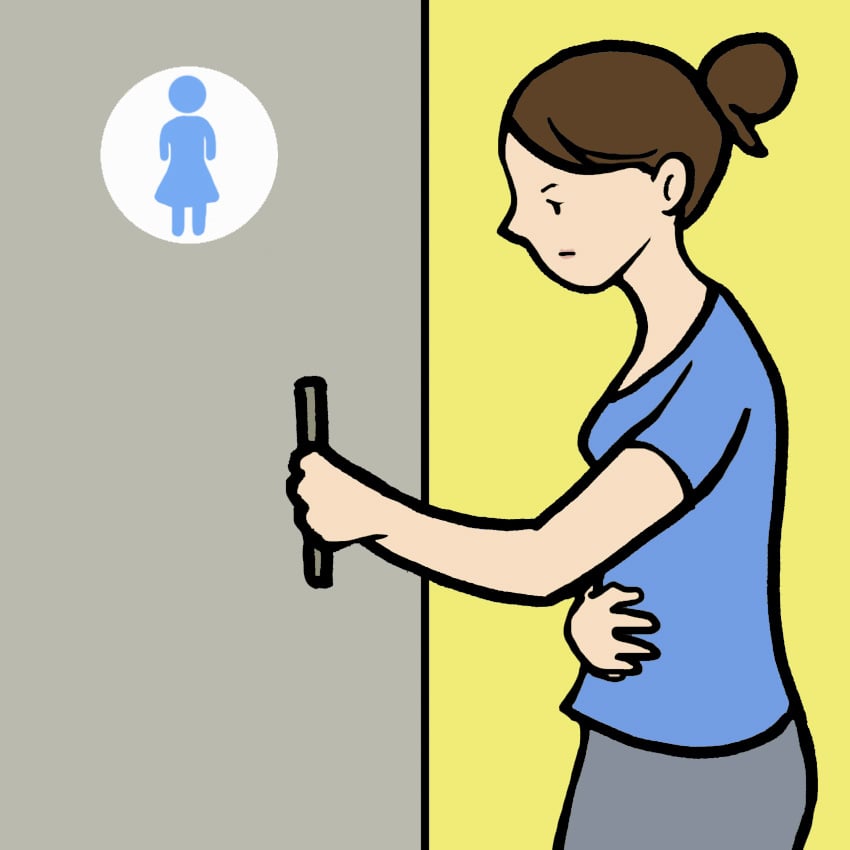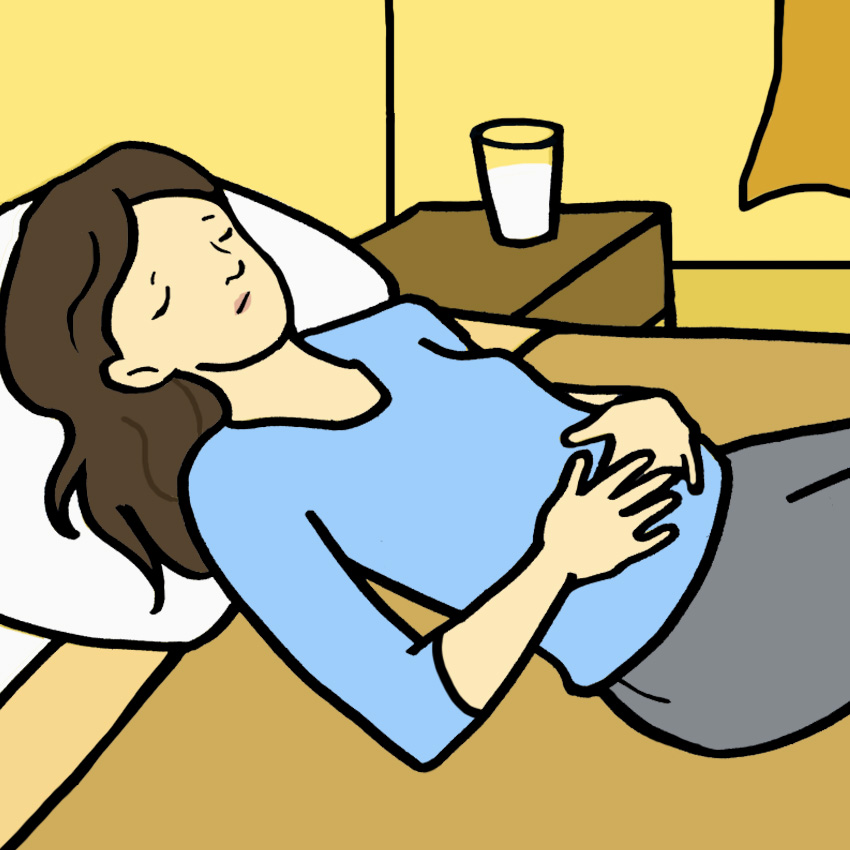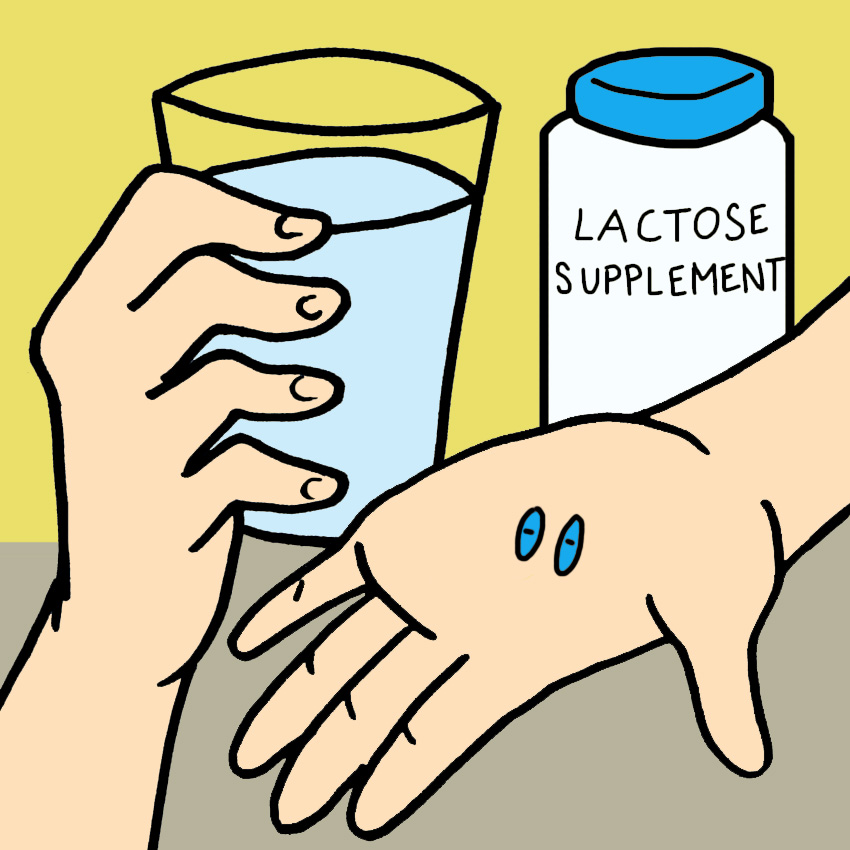Milk: it's so creamy, satisfying, and a required ingredient for many yummy treats — like a big, delicious, decadent milkshakes!
But for some, this ingredient can cause them a lot of pain and discomfort, often meaning that they have a lactose intolerance.
Lactose is a natural sugar found in milk and dairy, and some people's bodies have a harder time digesting them than others.
If lactose makes it to your intestines without being properly digested beforehand, it creates a lot of weird reactions, which can translate into some truly uncomfortable tummy symptoms, like gas, bloating, and nausea.
Fortunately, once you have be confirmed for having the intolerance, there are plenty of ways to adjust your diet and lifestyle so that you don't get all those icky stomach troubles!
But, as always, be sure to speak to your doctor so they can confirm your symptoms. They might be pointing to something more serious.
Check below to learn the telltale signs that your body isn't responding well to lactose — and what you can do to fix it!
How Can I Tell If I'm Lactose Intolerant? Symptom #1: Diarrhea

When undigested lactose travels through your small intestine, it draws in water through osmosis, according to Healthline.
This excess water creates a lot of uncomfortable belly symptoms, like nausea, vomiting, and diarrhea.
However, diarrhea could be caused by a host of other issues — from a case of food poisoning to something more serious, like Crohn's disease — so be sure to discuss your symptoms with your doctor.
Symptom #2: Gas

When the lactose makes it to your colon, bacteria responds with acid.
This results in excess belly gas that should happen 30 minutes to an hour after you eat lactose-rich food.
Pay attention to your eating habits. If you are experiencing strange symptoms after you eat certain foods, they could be the culprit to your distress.
Symptom #3: Abdominal Cramps

With all that going on in your belly, there's bound to be some physical discomfort down there as well.
After you eat, you may notice yourself cramping — which can be seriously uncomfortable!
If you are cramping uncomfortably without reason, lactose intolerance may be the reason.
Symptom #4: Bloating

We all bloat from time to time, especially after a big meal.
But if you find yourself bloating more frequently than usual, and not around your period, then it might be caused by your dairy ingestion.
Symptom #5: Headaches And Migraines

A lactose intolerance clearly can cause a lot of trouble for your belly and intestines, but it can also affect other areas like your head.
According to Dr. Jonathan Bernstein at the University of Cincinnati, dairy products can cause the blood vessels in your brain to expand and contract.
This creates abnormal blood flow, which can give you a headache, or worse, an intense migraine!
Once you have identified that you are lactose intolerant, there are plenty of ways to manage your diet — check them out below.
How Can I Manage My Lactose Intolerance? Treatment #1: Spread Out When You Eat Dairy

For some lactose intolerance sufferers, managing their discomfort can be as easy as spreading out when they eat milk products.
Sometimes eating solid foods along with milk makes it easier to digest, like eating cereal with your milk.
Experiment with your diet and keep a food diary — if you find that you symptoms get better if you drink less milk, then it should be pretty easy to manage.
Treatment #2: Eat Yogurt With Live Active Cultures

It may seem like yogurt would cause all of the uncomfortable symptoms mentioned before, but according to WedMD, eating yogurt with active live cultures can help you avoid them.
These cultures go into your gut and promote the growth of "good bacteria," which helps you digest foods more easily.
So the next time you're at the grocery store, check your yogurt label to see which ones say they contain "live active cultures."
Treatment #3: Try Milk Alternatives

Some lactose intolerances are so severe that it is best to avoid eating any milk products at all.
If you are an avid milk drinker, though, there are plenty of solutions so you can still enjoy something like it.
Almond, soy, rice, and lactose-free milk are sold in most grocery stores, and can be great alternative to ordinary milk.
Treatment #4: Try Lactose Supplements

There are also plenty of medications out there that help you digest lactose more easily.
Some come in pill form while others come in liquid form that you can take 24 hours before you know you'll be drinking milk.
There are also products that come with extra lactase in them, which is an enzym supplement that helps your body digest better.
However, be sure to speak with your doctor before trying any new supplements.
Treatment #5: Find Alternate Sources Of Calcium

Though you may be cutting back on milk, it's still important that you're getting all the vitamins that milk and dairy provide, like calcium.
Calcium is so important for keeping bones healthy and strong so that they don't break as easily when you're older.
It can also be found in other foods like kale, sardines, broccoli, and bok choy.
Treatment #6: Add Bone Broth To Your Diet

Bone broth is another surprising way to help your body digest food better.
The broth transforms calcium, magnesium, phosphorus, sulfur and other minerals to make them easier to absorb, according to Dr. Axe.
A lactose intolerance may be uncomfortable, but fortunately, there are plenty of ways to identify it and treat it from there!
Do you suspect you might be lactose intolerant? If so, be sure to speak to your doctor to confirm — and please SHARE these symptoms and treatments on Facebook!




